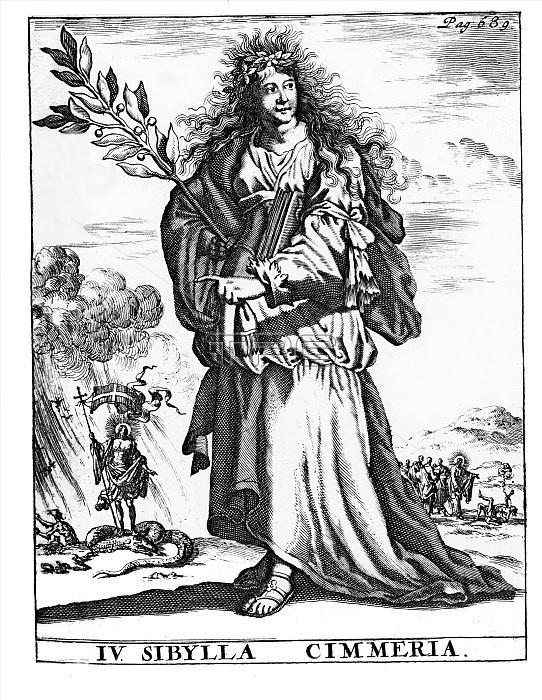
PREDICTIONS - SIBYLS - THE CIMMERIAN SIBYL The Sibylline Oracles are one of the great curiosities of the ancient world. Certain women, initiated in the Mystery Schools, developed the power to predict the future. Many of the 'oracles' delivered by the Sibyls were written down, in Greek hexametric verse, and preserved as sacred literature in a special priestly college. The Cumean sibyl's utterances were written on palm leaves. The oldest Sibyl is that of Erythraea, in Asia Minor - her prophecies dealt with the story of Helen and the Trojan War. The ancient school of Sibylline prophecy came to an end in the fourth century AD, when surviving official oracles were burned by Flavius Stilicho. However, the tradition continued afresh, in the pseudo-Christian literature. A collection of Greek texts, in eight books, and relating to Christ, appears to have been compiled in the 2nd century AD, and is now known as the Oracula Sibylina. In fact, the Sibyls in this present collection are those whose prophecies were reinterpreted - or even invented - by Christian apologists, who forged literature claiming to come from the utterances of no fewer than twelve Sibyls. Allegedly, each had something to say about the coming of Christ, and His importance in History. The eighth book of the Sibylline collection is unashamedly Christian in content, and contains the famous acrostic on the name of IXTHYS. From this mediaeval tradition, each Sibyl was accorded a distinctive symbol and an identifying emblem. The Cimmerian Sibyl in this image is depicted with olive leaves, and points to Christ as the slayer of the Devil. Behind her, Christ is exorcising a devil from the demoniac. Engraving from the Amsterdam 1685 edition of Spiegel der Sibyllen.
| px | px | dpi | = | cm | x | cm | = | MB |
Details
Creative#:
TOP17491134
Source:
達志影像
Authorization Type:
RM
Release Information:
須由TPG 完整授權
Model Release:
No
Property Release:
No
Right to Privacy:
No
Same folder images:

 Loading
Loading